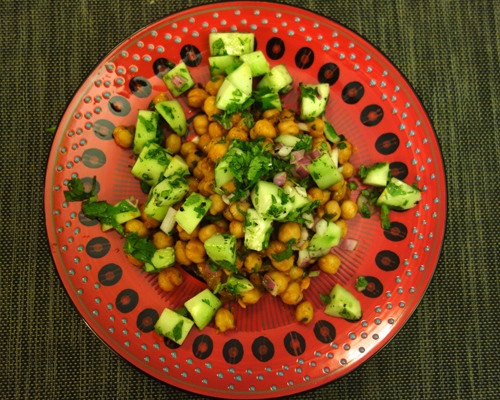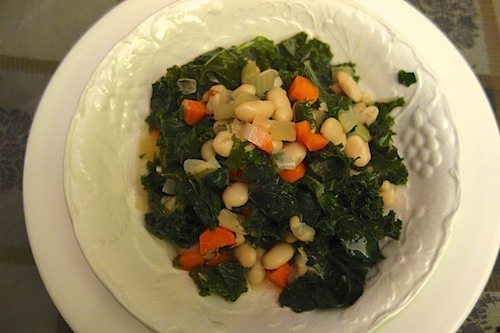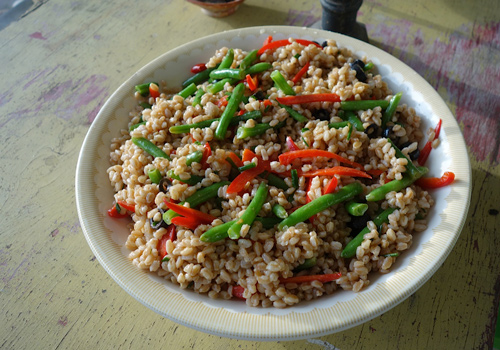- Home
- Features
- Business
- Active
- Sports
- Shop
healthy eatingmediterranean dietUncategorized
 Basia HellwigApril 23, 20102 Mins read177 Views
Basia HellwigApril 23, 20102 Mins read177 Views
Farro, Farro, Where Art Thou?
Share
 Zabar’s
2245 Broadway (at 80th Street)
New York, NY 10024
212-787-2000
Fairway
2312 12th Avenue (at 130th Street)
Manhattan
212-234-3883
2127 Broadway (at 74th Street)
Manhattan
212-595-1888
480-500 Van Brunt Street
Red Hook, Brooklyn
718-694-6868
Zabar’s
2245 Broadway (at 80th Street)
New York, NY 10024
212-787-2000
Fairway
2312 12th Avenue (at 130th Street)
Manhattan
212-234-3883
2127 Broadway (at 74th Street)
Manhattan
212-595-1888
480-500 Van Brunt Street
Red Hook, Brooklyn
718-694-6868
I’m hunting for farro—once I find out what it is. It’s the first item in a recipe for Panzanella di Farro, or Tuscan tomato salad with farro, in Olives and Oranges, by Sara Jenkins and Mindy Fox.

All I know is that it’s a grain—and not one found on my local grocers’ shelves. When I Google it, I find lots of contradictory information. It’s spelt, it’s not spelt. It takes an hour to cook, it takes 20 minutes. I go on with my research and when I’m deep in the weeds of scientific discussions about tetraploid wheats and taxonomy disputes I decide I’ve learned enough.
Farro scholars (I’m sure they’re out there) may split hairs but here’s what I, er, boil it down to: Farro (triticum dicoccum or emmer wheat) is an ancient grain, an unhybridized wheat with an intact husk that is the ancestor of modern durum wheat. (Spelt is triticum spelt, a close relative, but not exactly the same in taste and texture. Still, confusion reigns, because Triticum dicoccum, farro, is often translated into English by its Italian producers as “spelt.”)
I learn that farro was one of the earliest domesticated crops in the Fertile Crescent, known to archaeologists who explore ancient tombs and excavations. It was eaten by the Roman legions (it seems they were sometimes paid with a daily ration of farro). Farro’s backstory begins to read like a novel. In 1906 agronomist and botanist Aaron Aaronsohn found wild emmer growing in Rosh Pinah (Israel), and his discovery of the “mother” of wheat was said to have caused a sensation in the botanical world. Something about all this thrills me—call me a romantic, but part of the pleasure of Mediterranean eating, I am discovering, is this connection to peoples long gone and life in places far away.
Emmer survives in mountainous regions as what’s called a relict crop, one left over from the days when it was widely cultivated. Today it is mostly cultivated in Italy, in Umbria, and Tuscany, most famously in the region of Garfagnana, where it has the equivalent of an appellation controlée.
The farro I’ve located in New York is from Umbria and it’s semipearled, meaning the husk has been cracked and it takes only 20 minutes to cook. It has a wonderful nutty flavor and is full of nutrients, too—high in protein, vitamins B and E, and fiber.
• Bartolini Emilio brand (500 g/$8) at Zabar’s, back behind the coffee to the left of the jams
• Roland brand (500 g/$5) at Fairway, on the shelf with rices. (The words Triticum dicoccum don’t appear on the Roland package but farro does and I’m going with it for now.)
• Rusticella d’Abruzzo brand at Market Hall Foods online (the bricks-and-mortar store is in Oakland, CA)
• Rusticella d’Abruzzo brand at Market Hall Foods online (the bricks-and-mortar store is in Oakland, CA)
Related Articles
Featuredhealthy eatingmediterranean dietUncategorized  Basia HellwigJuly 3, 2013
Basia HellwigJuly 3, 2013
RECIPE: Chickpea Curry and Cucumber
THIS WARM SALAD—chickpeas with cucumbers as a garnish—makes such a tasty...
Featuredhealthy eatingmediterranean dietUncategorized  Basia HellwigApril 29, 2013
Basia HellwigApril 29, 2013
Meatless Monday Recipe: Kale and White Bean Stew
I BECAME A KALE FAN JUST A FEW YEARS AGO when my...
Featuredhealthy eatingmediterranean dietUncategorized  Basia HellwigApril 22, 2013
Basia HellwigApril 22, 2013
RECIPE: Farro Salad with Red Peppers and Beans
I GOT A JUMPSTART ON MEATLESS MONDAY this weekend when my friend made...






Leave a comment